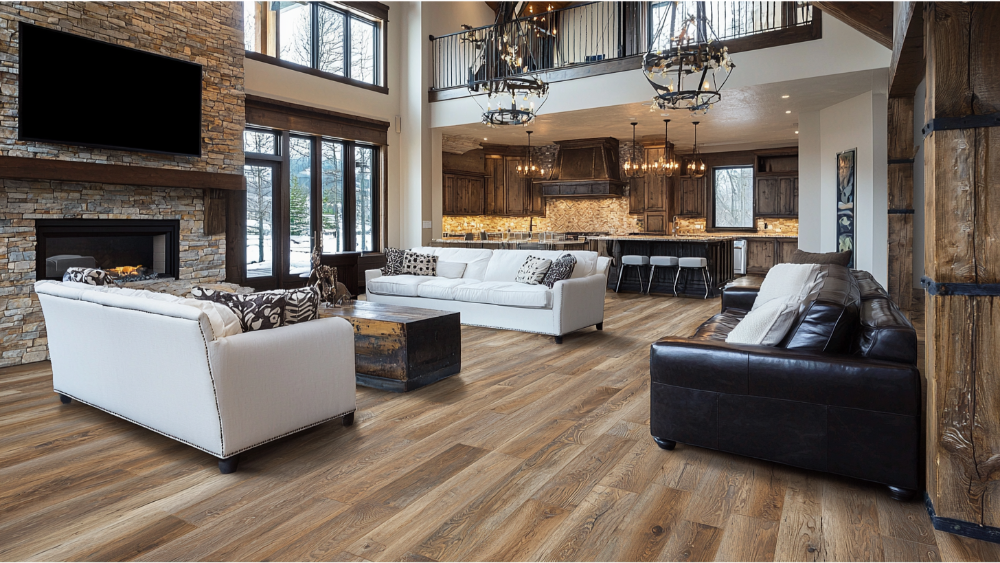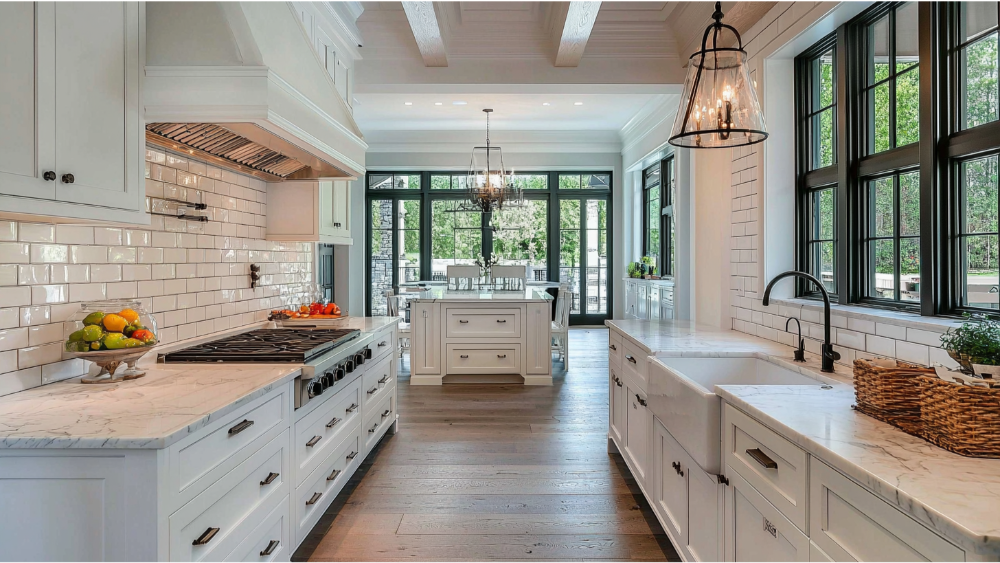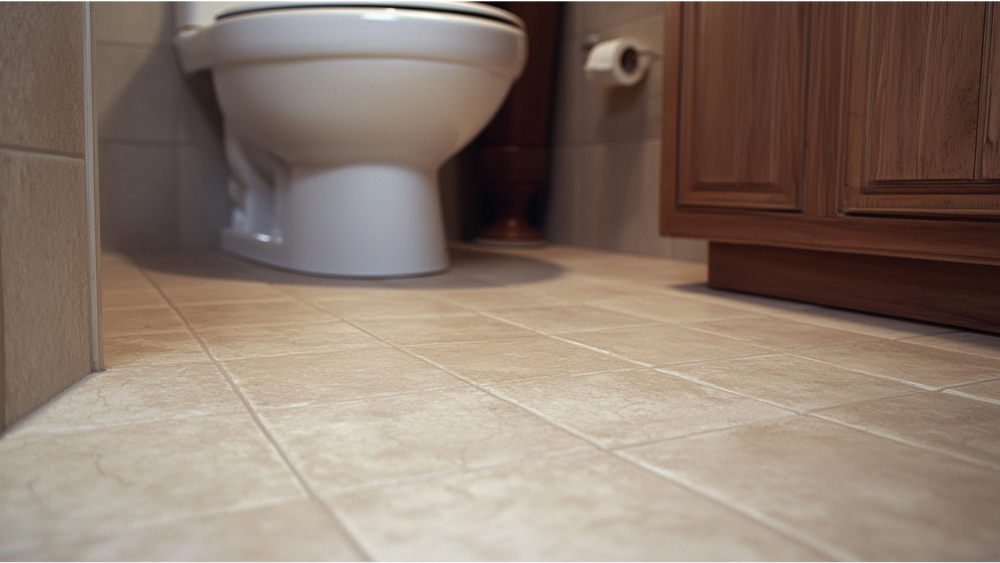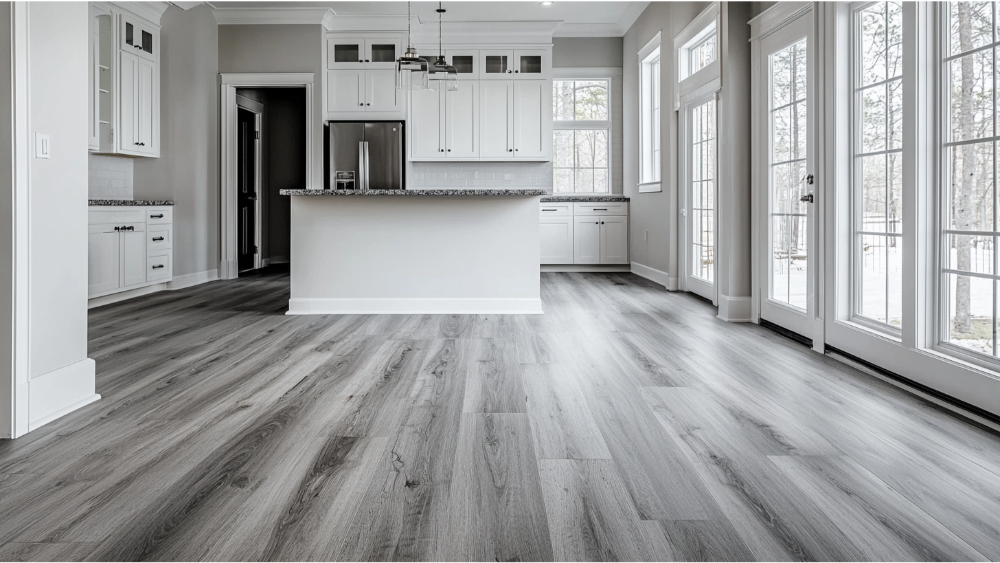Luxury Vinyl Plank (LVP) flooring is a popular choice for many homeowners due to its durability, aesthetic appeal, and affordability. However, when it comes to installing LVP flooring on an uneven floor, challenges can arise. While LVP can tolerate minor imperfections, significant unevenness in the subfloor may lead to issues like gaps or buckling over time. To ensure a successful installation, it is very crucial to properly assess and prepare the surface before laying the planks.
Why Does Floor Evenness Matter for LVP?
Avoid Damage to Vinyl Plank Flooring
Uneven surfaces can create stress points under the planks, leading to cracks or warping over a period of time. When you install vinyl plank flooring on a subfloor with noticeable imperfections, the planks may not properly distribute weight, causing them to wear unevenly. This not only shortens the lifespan of the flooring but also diminishes its visual appeal, requiring costly repairs or replacements.
Prevent Issues with Flooring Joints
Properly level floors are essential for creating tight and secure flooring joints. On uneven surfaces, gaps may form between the planks, compromising the seamless look of vinyl plank flooring. These gaps can also allow dirt and moisture to seep in, leading to swelling or damage that disrupts overall floor integrity.
Ensure a Smooth Installation Process
Installing vinyl plank flooring on an uneven surface can be time-consuming and labor-intensive. Unevenness often requires extra preparation, such as sanding high spots or filling low areas, to create a suitable base. Neglecting this step increases the likelihood of misalignment during installation, resulting in a less professional finish.
Maintain the Durability of the Flooring
LVP is known for its durability, but uneven subfloors can drastically affect its performance. When placed on an unstable or bumpy surface, the planks may shift or flex more than intended, weakening the structure. Ensuring an even surface allows vinyl plank flooring to retain its durability and resist wear over time, even in high-traffic areas.
Improve Comfort Underfoot
An even floor enhances the comfort and functionality of your vinyl plank flooring. Uneven surfaces can create noticeable high and low spots that affect how the flooring feels underfoot. These inconsistencies can make walking across the floor less comfortable and even pose a tripping hazard. By ensuring a level subfloor, you can create a smooth and supportive foundation that improves the overall experience of using your space.
Common Issues Caused by Installing LVP Over an Uneven Floor
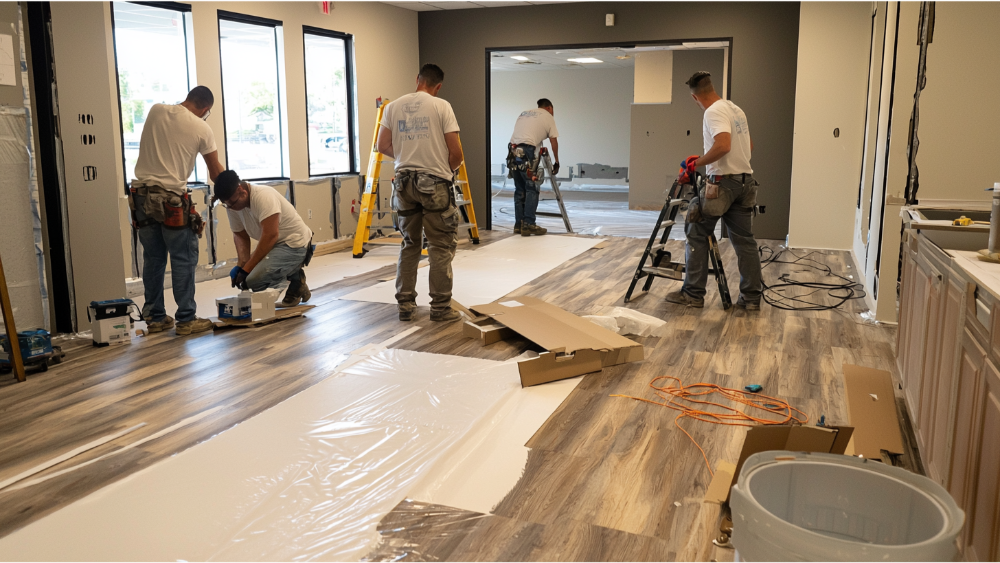
Gapping and Separation
On uneven subfloors, LVP planks in a floating floor system may develop gaps over time due to poor alignment and shifting. This issue is particularly common on plywood subfloors that have not been properly leveled, as imperfections can interfere with the locking mechanisms of the planks. These gaps not only disrupt the appearance of the flooring but can also allow debris and moisture to enter, causing damage.
Buckling and Warping
Significant unevenness in the subfloor can create stress points that lead to buckling or warping in the LVP. This is especially problematic in glue-down installations, where the adhesive may not cure evenly on a bumpy surface, compromising the bond. Over time, the planks may lift or distort, requiring costly repairs or reinstallation.
Premature Wear and Tear
When Luxury Vinyl Plank flooring is installed on an unstable subfloor, certain areas may bear more weight or pressure than others. This uneven distribution can lead to premature wear in high-stress spots, particularly on floating floors. For example, edges may chip or corners may deform, reducing the overall lifespan of the flooring.
Noisy Floors
An uneven plywood subfloor can create hollow spots underneath the LVP, which often produces creaking or noisy sounds when walked on. This is a common issue with floating floor systems, as the planks are not securely attached to the subfloor and rely on the surface for support. A properly leveled subfloor is essential to avoid these distractions and ensure a solid, quiet installation.
Difficulty Maintaining Adhesion
Glue down installation methods are particularly sensitive to uneven subfloors, as adhesives require uniform contact to hold the planks in place. For sub floor imperfections, such as dips or bumps, can result in poor adhesion, causing the planks to lift over time. This can lead to sections of the flooring detaching, leaving an uneven and unattractive surface.
Tips for Luxury Vinyl Plank Installation on Uneven Floors
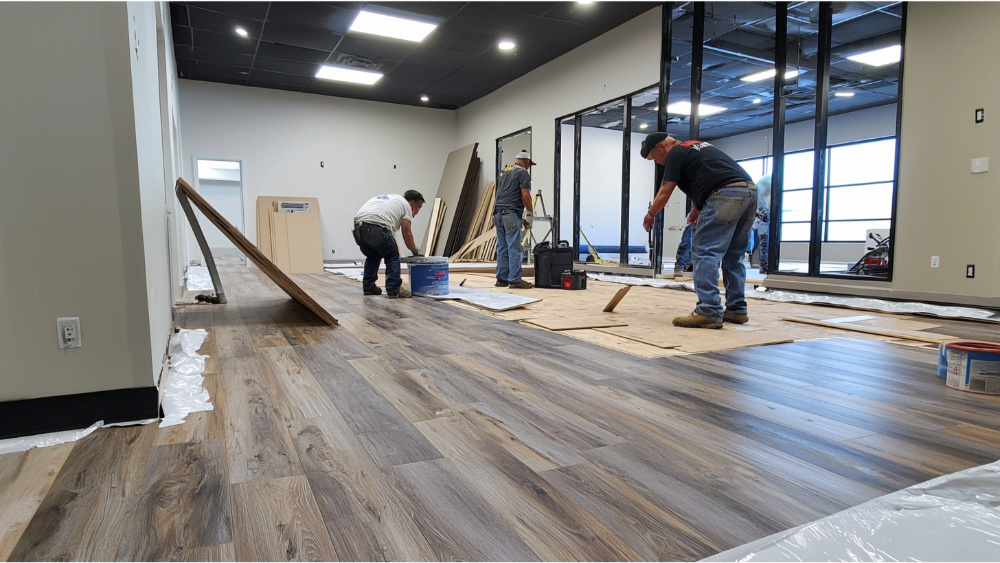
Use Thicker Planks
Opting for thicker LVP planks can help compensate for minor imperfections in the subfloor. Thicker planks are more rigid and less likely to flex or conform to small bumps and dips, offering improved stability. This option is ideal for areas with gradual unevenness, though it may not eliminate the need for some surface preparation. Thicker planks can often be found at your local hardware store and are available in various styles and finishes.
Apply a Self-Leveling Compound
Self-leveling compound is an effective solution for addressing significant subfloor imperfections before installing LVP. This material can fill low spots and create a smooth, even surface, providing a strong foundation for your flooring. It’s easy to find at hardware stores and can often be applied as a DIY project if you follow the product’s instructions. This method ensures better adhesion for glue down planks and improved alignment for floating floor systems.
Accommodate For Gradual Slopes
If your floor has a gentle, gradual slope that does not interfere with functionality, you may be able to install LVP without further leveling. Carefully choosing a flooring layout that works with the slope can help minimize visual or structural issues. For instance, running planks parallel to the gradient may reduce stress on joints. However, consultation with a flooring specialist at a hardware store may still be beneficial to achieve the best outcome.
Consider Alternative Flooring Materials
For highly uneven subfloors, exploring other flooring options like laminate, carpet, or engineered wood may be more practical. These materials often have different installation methods or flexibility that can better accommodate less-than-perfect surfaces. Discussing your needs with an expert at a local hardware store could help you find the most suitable solution. Alternative options may still provide durability and style while reducing the need for extensive subfloor preparation.
Install Underlayment with Cushioning Properties
For moderately uneven subfloors, using a quality underlayment with cushioning properties can help mitigate minor imperfections. This layer acts as a buffer between the subfloor and the LVP, absorbing small dips and inconsistencies while improving soundproofing and comfort underfoot. However, it is not a solution for severe unevenness and should be paired with other leveling methods if necessary. Be sure to choose an underlayment specifically designed for use with LVP to ensure compatibility and optimal performance.
Frequently Asked Can Luxury Vinyl Plank be Installed on Uneven Floors Questions
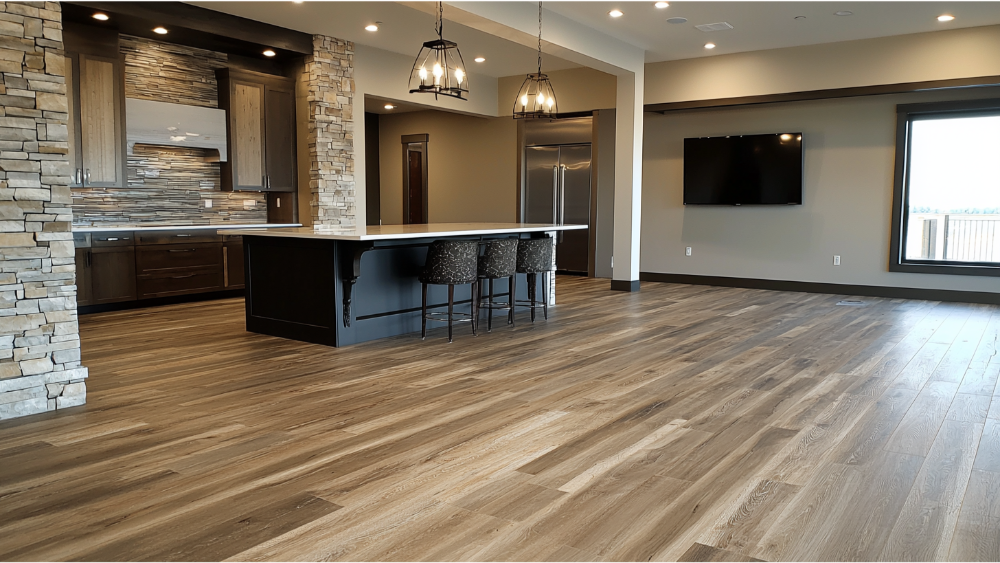
What happens if you install vinyl plank on an uneven floor?
Installing vinyl plank on an uneven floor can lead to a variety of problems that affect both the appearance and functionality of your room. Since a flat surface is crucial for proper installation, uneven subfloors can cause the planks to shift, resulting in gaps or misalignment over time. This can compromise the durability and stability of the flooring, making the room feel less polished and comfortable. To avoid these issues, it’s essential to level the subfloor to create a smooth and flat foundation before laying vinyl plank.
How Much Uneven Floor Is Acceptable for Vinyl Plank Flooring?
For vinyl plank flooring, minor imperfections in the subfloor are generally acceptable, but significant unevenness must be addressed. Industry standards typically recommend that the subfloor should not deviate more than 3/16 of an inch over a 10-foot span. Beyond this, the unevenness can cause issues such as poor adhesion, noise, or premature damage to the planks. Ensuring a smooth, even surface is crucial for achieving a durable and visually appealing installation.
What Is the Best Flooring for Uneven Floors?
The best flooring for uneven floors often depends on the severity of the imperfections. Carpet is a versatile option as it can easily conform to uneven surfaces and can be paired with a thick underpad for added cushioning. Luxury vinyl tile (LVT) and engineered wood are also excellent choices due to their flexibility and ability to perform well with minor subfloor inconsistencies. For highly uneven floors, consulting a professional and considering alternative methods like self-leveling compounds or additional preparation may help optimize your flooring choice.
Conclusion
Installing luxury vinyl plank flooring on an uneven subfloor requires careful preparation and thoughtful planning to ensure a successful outcome. While minor imperfections can often be accommodated with solutions like thicker planks, quality underlayment, or self-leveling compounds, significant unevenness may demand more extensive measures or alternative flooring options. By addressing subfloor issues proactively and consulting with flooring experts as needed, you can achieve a durable, aesthetically pleasing installation that enhances the overall look and feel of your space. Proper preparation is the key to avoiding common pitfalls and enjoying long-lasting results with your luxury vinyl plank flooring.


